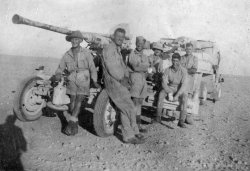Patrons:
Air Marshal Sir Ian Macfadyen
The Lieutenant Governor, His Excellency Lieutenant General Sir John Lorimer KCB DSO MBE
The Museum of the Manx Regiment
John Huxley, Chairman of the museum, said: “This is a massive vote of confidence from the Association. We consider it an honour to take on custodianship of their historic artefacts and records which form a collection of great importance to the Manx nation. We get thousands of visitors every year so a lot of people will be able to learn about the truly incredible feats of the Manx Gunners all through World War Two. We are proud to be able to tell the story of these men who were involved in the Battle of Britain, the campaigns in Eritrea, Crete and North Africa, the Italian campaign and the liberation of Europe.”
The Museum of the Manx Regiment gives a detailed history of the Regiment’s wartime service, with uniforms, weapons, equipment and photographs. It includes a special section giving a a detailed view of life in German Prisoner of War camps. Over 100 men of the Regiment’s 129th Battery were captured by the Germans on the Island of Crete in 1941 and spent the rest of the war in captivity. On display are photographs of daily life in the POW camps along with concert and theatre programmes and posters. A secret radio makes a fine centrepiece. It was built by one of the Manx POWs and was hidden from the camp guards in a hollowed-out log, kept by the stove in one of the camp huts. Another section shows some of the souvenirs which were brought back to the Island by members of the Regiment, including flags, weapons, and even a piece of Adolf Hitler’s writing paper.
The Regimental Museum and archive continues to grow and is Britain's most comprehensive museum of a Light Anti-Aircraft Regiment.
The Manx Regiment (15th Light Anti-Aircraft Regiment, Royal Artillery), used Bofors guns to provide anti-aircraft defence for factories, airfields and military units. On 3rd September 1939, the very day that Britain declared war on Germany, the Regiment fired the first shots of any of the British Armed Forces and two of the shell cases from this historic action are on display. It later saw action in southern England, Eritrea, Crete, North Africa, Italy and in northern Europe. Its total of enemy aircraft destroyed or damaged is higher than any other light anti-aircraft regiment in the British Army.

